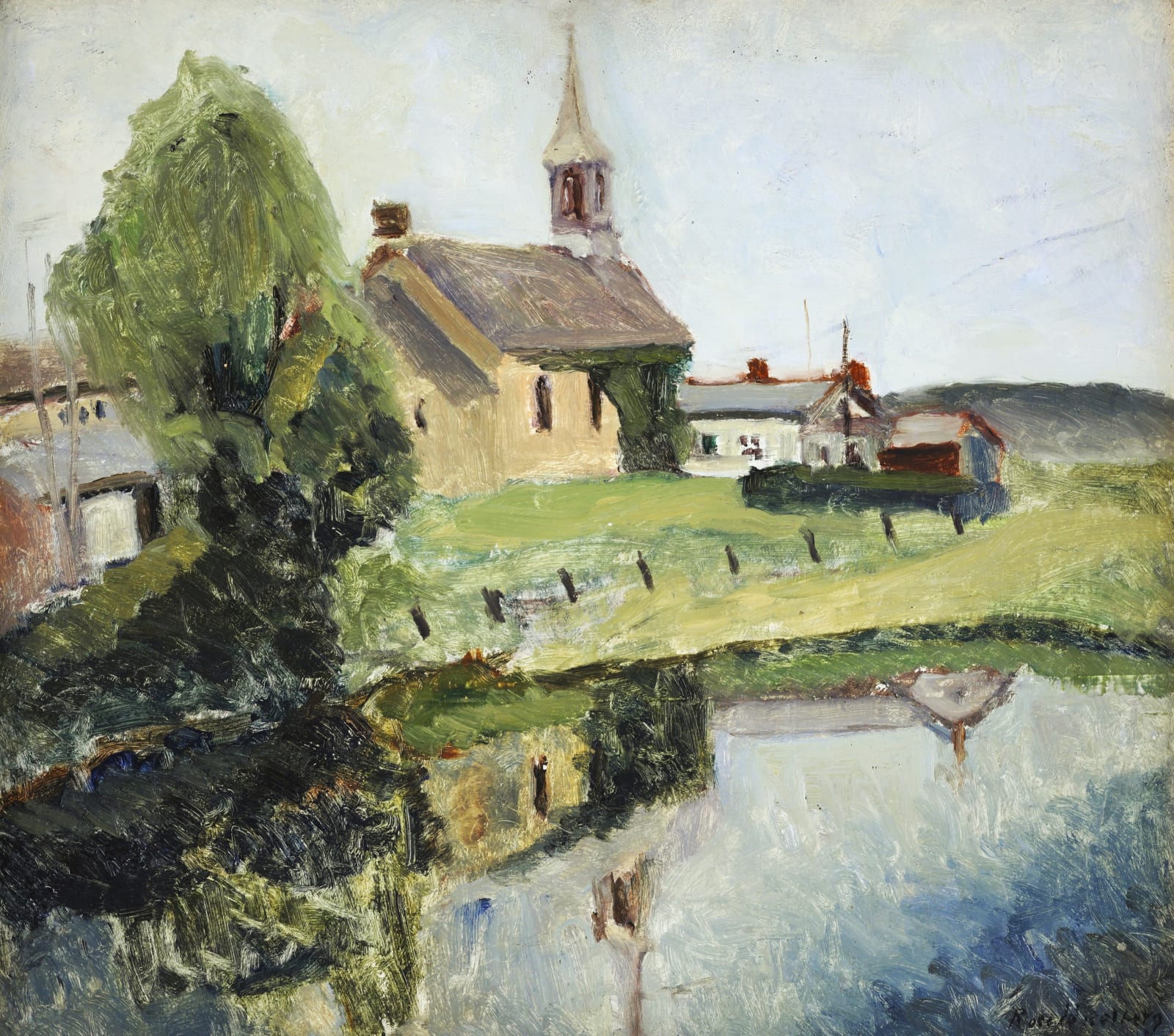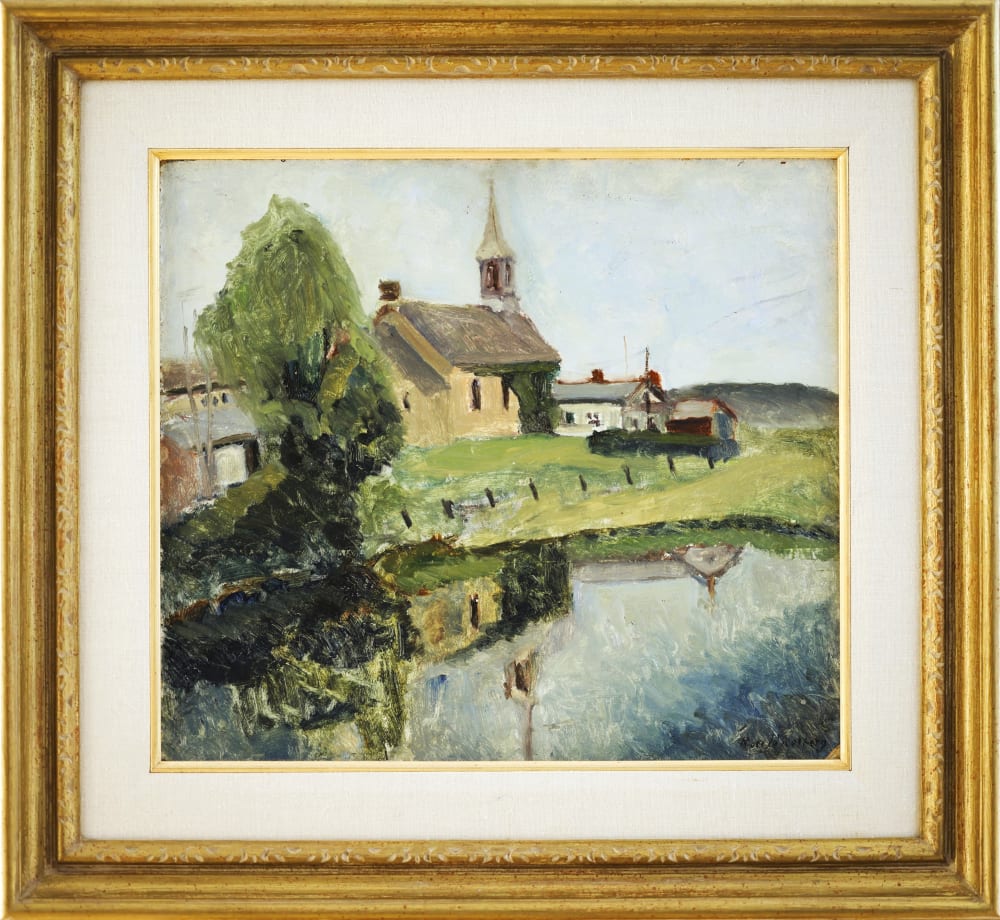Rose Wiselberg Canadian, 1908-1992
Further images
Canadian painter Rose Wiselberg (1902–1966) captures the quiet poetry of rural life in the province she loved. She is remembered for her deeply expressive depictions of Quebec landscapes and village scenes. Born in Montreal, she studied at the Art Association of Montreal School of Fine Arts, where she trained under several of the city’s most influential artists and teachers, including William Brymner, Randolph Hewton, and Maurice Galbraith Cullen—figures closely tied to the development of modern Canadian painting. Wiselberg’s training placed her in direct dialogue with both the Beaver Hall Group circle and the broader traditions of Canadian Impressionism, giving her a unique artistic voice that merged structural clarity with atmospheric emotion.
Village Church, Quebec (1950) embodies Wiselberg’s sensitivity to both architecture and landscape. The modest church, central to the composition, rises with a quiet dignity against the village setting, surrounded by soft brushstrokes that convey the mood of a Quebecois winter or early spring. Her use of light and muted colour harmonies reflects her connection to the Impressionist techniques popularized in Canada by artists such as Cullen and Clarence Gagnon, while her strong sense of design suggests the influence of modernist tendencies she encountered through her peers in Montreal’s evolving art scene.
Wiselberg’s life and career were marked by resilience and dedication. As one of the few Jewish women artists working in Montreal during the early and mid-20th century, she forged a path in a male-dominated art world, exhibiting at the Art Association of Montreal and contributing to the rich artistic culture of the city. Her works often reveal an empathy for the quiet dignity of ordinary settings—village streets, rural churches, and domestic scenes—transforming them into timeless reflections of Canadian identity.
Today, Village Church, Quebec stands as an important example of mid-20th century Quebec painting, linking Wiselberg’s practice to broader Canadian art movements and institutions. Collectors and historians value her work for the way it bridges Canadian Impressionism, the Beaver Hall Group’s modernism, and Jewish-Canadian cultural history. By situating a humble Quebec village church within the enduring narrative of Canadian art, Wiselberg secured her legacy as both a regional painter and a voice within Canada’s national story.Provenance
- Kastel Gallery, Montreal- Galerie D'Art Vincent, Montreal
- private collection, Guelph






